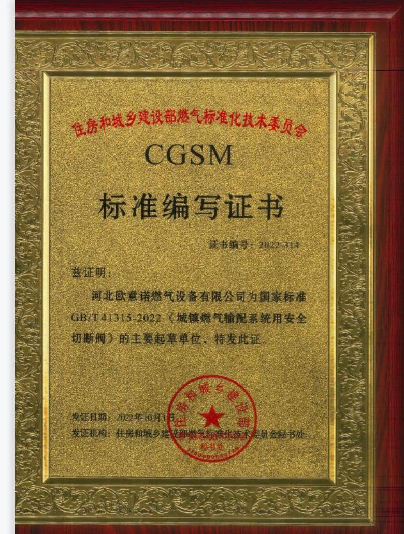
Dec . 22, 2024 08:57
Back to list
relief valves
Understanding Relief Valves A Key Component in Pressure Management
Relief valves play a crucial role in various industrial applications, acting as a safety mechanism designed to protect equipment and personnel from the dangers associated with overpressure situations. These devices are widely used in different fields, including petrochemical, pharmaceutical, food processing, and water treatment industries. This article will delve into the significance of relief valves, their operation, types, and maintenance to ensure optimal performance.
What Are Relief Valves?
Relief valves are automatic devices that limit pressure within a system by releasing excess fluid (gas or liquid) when a preset pressure threshold is exceeded. This function is vital in preventing equipment failure, as overpressure can lead to catastrophic incidents such as explosions, equipment damage, or environmental contamination. They are an essential part of pressure relief systems and are often required by various safety regulations across industries.
How Do Relief Valves Work?
The operation of a relief valve is relatively straightforward. It consists of a spring-loaded mechanism, a valve seat, and an outlet that directs the discharged fluid away from the system. When the pressure in the system rises to the predetermined set point, the force of the pressure overcomes the force of the spring, causing the valve to open. This allows the fluid to escape, thereby lowering the pressure within the system. Once the pressure drops below the set point, the spring mechanism pushes the valve back to its closed position, restoring normal conditions.
Types of Relief Valves
Several types of relief valves are designed to cater to different applications and pressure management needs. The most common types include
relief valves

1. Spring-loaded Relief Valves These are the most widely used and operate based on the balance between the system pressure and the spring force. They are versatile and can handle both gas and liquid applications.
2. Pilot-operated Relief Valves These valves use system pressure to assist in opening and closing the valve. They are suitable for high-pressure applications and offer better resealing capabilities compared to spring-loaded valves.
3. Balanced Relief Valves Designed to maintain a constant pressure difference, balanced valves can accommodate varying back pressures, making them ideal for processes where upstream and downstream pressures fluctuate.
4. Dome-loaded Relief Valves These valves use a controlled gas pressure to assist in valve operation. They are particularly useful in services where high back pressure is a concern.
Importance of Maintenance
Regular maintenance of relief valves is essential to ensure their proper functioning. Inadequate maintenance can lead to valve sticking, improper seating, and failure to open or close. It is recommended to conduct routine inspections, testing, and service based on manufacturer guidelines and industry standards. Common maintenance practices include checking for leaks, ensuring proper alignment, and verifying the calibration of pressure settings.
Conclusion
In conclusion, relief valves are indispensable components in pressure management systems across various industries. Their ability to prevent overpressure incidents not only protects equipment and processes but also safeguards human lives and the environment. Understanding the types, operation, and maintenance of relief valves is essential for anyone involved in industrial operations. By prioritizing effective pressure management and adhering to safety regulations, organizations can enhance their operational efficiency and reduce the risk of dangerous incidents. As technology continues to evolve, further innovations in relief valve design and applications are anticipated, ensuring ongoing safety and reliability in pressure management solutions.
Next:
Latest news
-
Safety Valve Spring-Loaded Design Overpressure ProtectionNewsJul.25,2025
-
Precision Voltage Regulator AC5 Accuracy Grade PerformanceNewsJul.25,2025
-
Natural Gas Pressure Regulating Skid Industrial Pipeline ApplicationsNewsJul.25,2025
-
Natural Gas Filter Stainless Steel Mesh Element DesignNewsJul.25,2025
-
Gas Pressure Regulator Valve Direct-Acting Spring-Loaded DesignNewsJul.25,2025
-
Decompression Equipment Multi-Stage Heat Exchange System DesignNewsJul.25,2025

